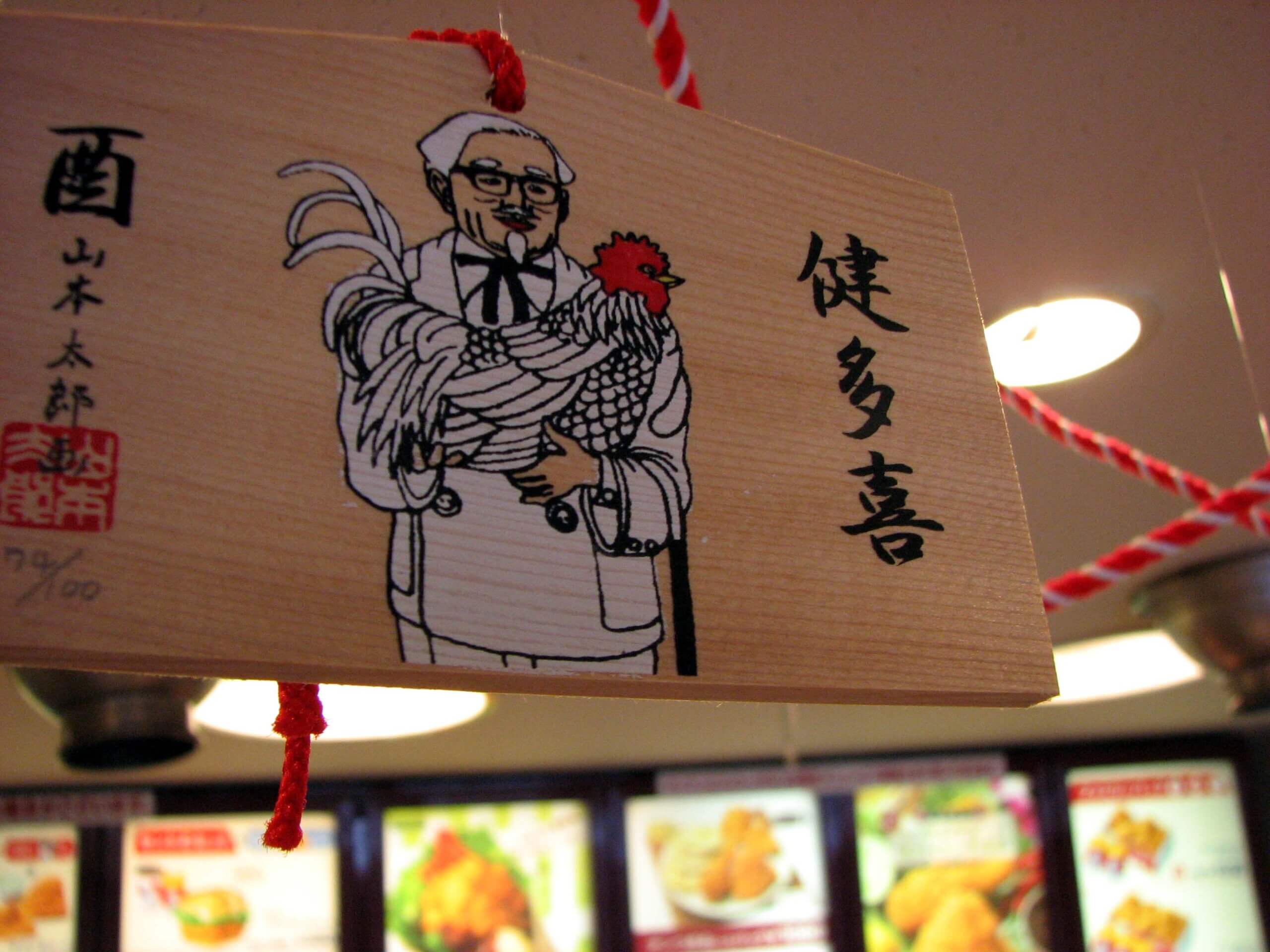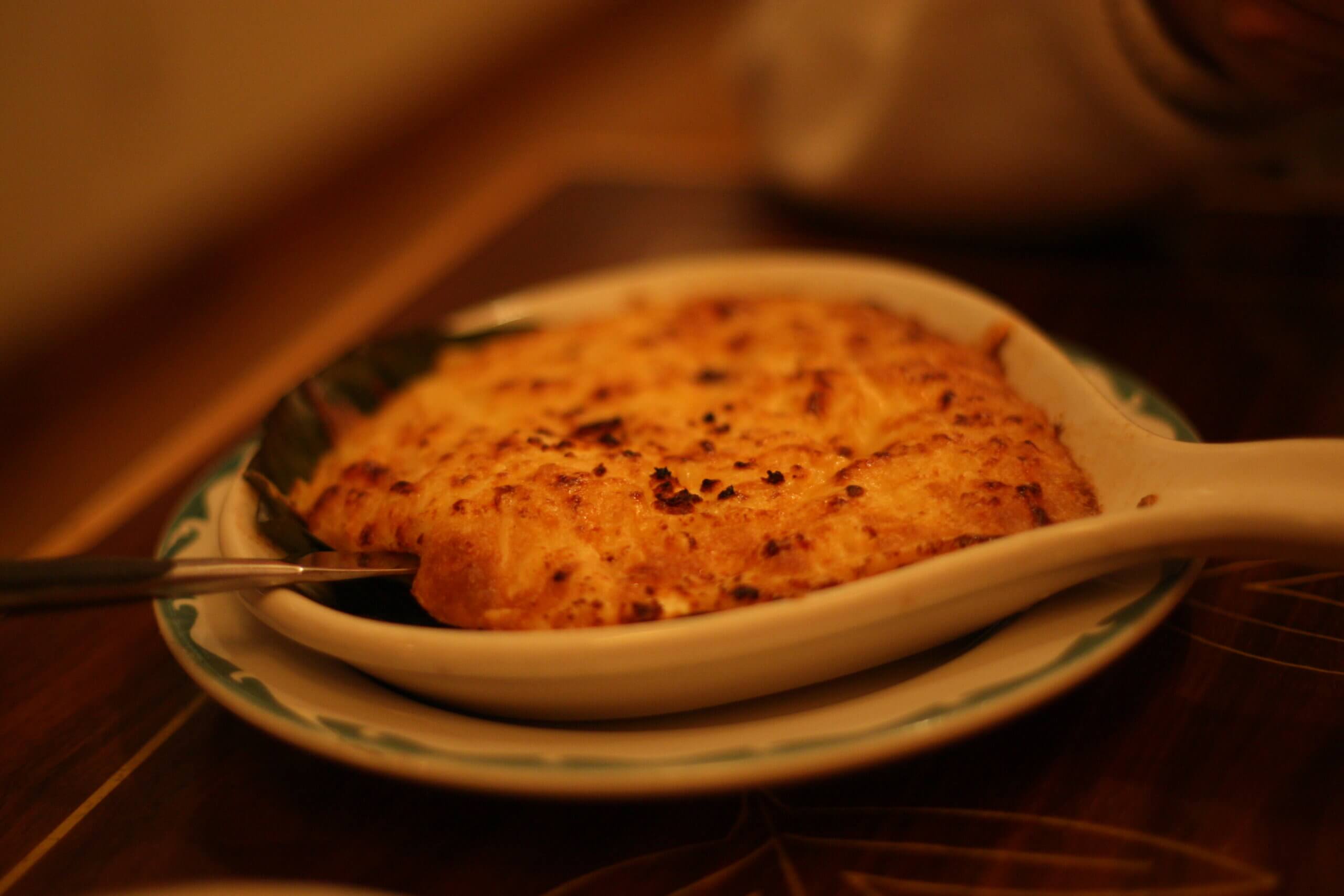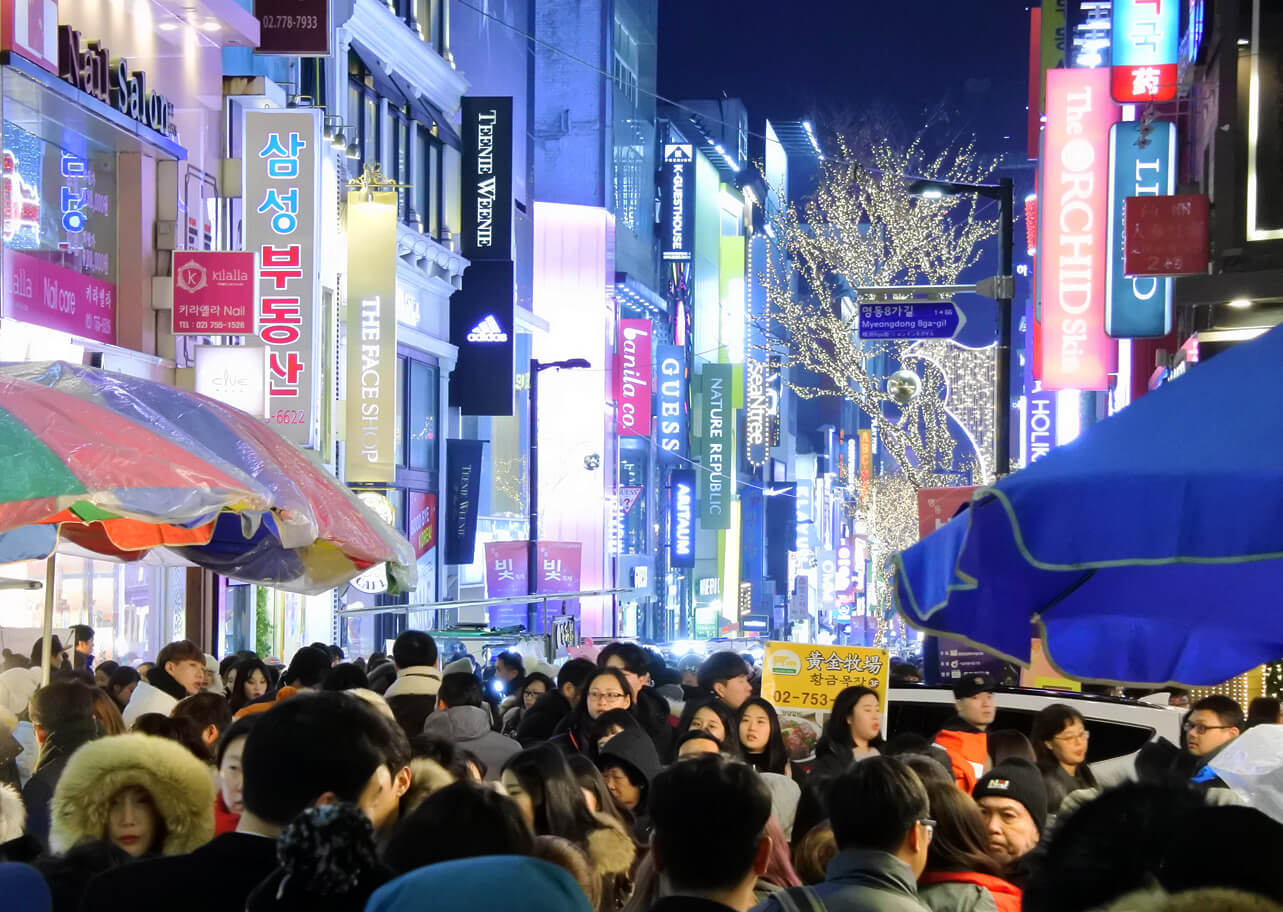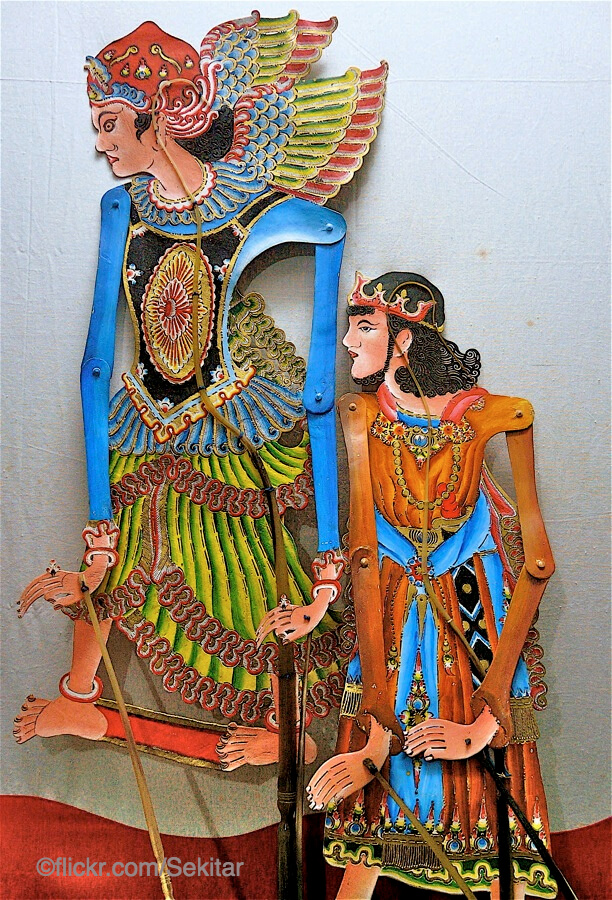Wooden plaque with Colonel Sanders.
Source: Chris Gladis, Flickr user MShades, CC BY 2.0, via Wikimedia Commons
December 25th in Japan is just a normal working day. However, even though it has almost none of the connotations it carries in Western countries, this day is widely celebrated in Japan by
young couples and groups of friends. A partner, a Kentucky Fried Chicken menu, a slice of cake decorated with strawberries, and a walk while enjoying the stunning winter illuminations is all you need to experience an unforgettable Christmas in Japan!
No, you didn't read it wrong! A partner is one of the necessary ingredients for a perfect Christmas in Japan! Christmas Eve is thought of as
a romantic day, resembling Valentine’s Day in many ways. This is the perfect occasion for Japanese couples to spend time together, to exchange gifts, to go crazy for seasonal lightning events, and to plan romantic dinners.
Talking about food, there are two obligatory items on the Christmas menu: fried chicken and cake. However, not every kind of fried chicken goes, nor does any variety of cake.
About
3.6 million Japanese families order their Christmas meals up to six weeks in advance from none other than good old KFC! This is a tradition that goes back to 1974, when Takeshi Okawara, the future president and CEO of Kentucky Fried Chicken Japan, inspired the company to launch a hugely successful national Christmas marketing campaign called ‘
Kurisumasu ni wa Kentakkii’, or ‘Kentucky for Christmas’. As a matter of fact, the Christmas packages account now for one third of the chain’s yearly sales in Japan. This is how successful the campaign was.
Moving on to dessert: light, spongy Christmas cake covered with whipped cream and topped with strawberries is a must as well! However, what is interesting is that this cake is not about Christmas at all. Its origins lie in the
post-WWII era, when the luxury cake once reserved for the elite became a widely available dessert for the newly formed middle class. In other words, the cake became a symbol of Japan’s prosperity, and even its round shape and red and white colours seem to serve as a symbol of the Japanese flag.
To perfectly end the celebration of Christmas, Japanese, preferably with their other halves, usually go out in the evening to enjoy the
Christmas lights. Streets, shops, restaurants, buildings, trees, stairs, everything is covered with spectacular illuminations, decorations, or visual projections. A truly mesmerising experience!
Christmas apples at FamilyMart in Beijing.
Source: N509FZ, CC BY-SA 4.0, via Wikimedia Commons
In China, Christmas is
not an official holiday, and offices, schools, and banks are open as usual. However, since Christmas is becoming a bigger and bigger deal in the country, many people still find their own ways to celebrate in both traditional and unconventional ways, and share in the seasonal spirit.
Christmas in China is more similar to Saint Patrick’s Day or Valentine’s Day. It is celebrated in a lighthearted fashion with friends, and not with family as in the West. Common activities include watching a movie, shopping, or going to a karaoke bar—and couples usually see it as a romantic day and might spend it ice skating or visit amusement parks.
A common tradition during Christmas in China is to give away
christmas apples, or ‘
peace apples’, as they have also been called. This tradition is said to have arisen due to the word for “apple” (
pingguo) being similar to the word for “Christmas eve” (
pinganye) in Chinese. Other sources have also contested that the word for “apple” is similar to the word for “
peace” in Chinese, since they both include the element “
ping”, and that the act of giving apples is because people want to bring
psychological comfort to their friends and families. They want to bring happiness and peace into their lives. Giving away apples in China has also become popular among Beijing’s Christians—so popular that the parishes give away an apple to everyone who attends
midnight mass.
The celebration of Christmas in China is very
commercialised, and there is not much connection to the holiday in the religious or traditional sense. Ever since the 1990s, which was when China first started allowing the more commercialised version of Christmas, the Western-style version gradually faded away along with its religious connotations. There do exist Christians in China who might engage in religious practices—as mentioned above—albeit it's only around
1% of the total population. However, these practices are
tightly regulated by the government. Take, for example, the act of caroling: sometimes the government allows it and sometimes they do not.
A traditional bibingka.
Source: *highlimitzz, CC BY 2.0, via Wikimedia Commons
Known for their unconditional love for celebrations, Filipinos take their Christmas very seriously. As the only
predominantly Catholic country in the region, The Philippines boasts one of the most heartfelt Christmas traditions in the world. Colonised by Spain in the 17th century and later annexed by the US, the country shows a remarkable syncretic folklore, especially under Christmas: yummy Filipino food finds its place on a full table laid with a red festive cloth: a mouth-watering landscape for foodies like us.
In a usual year, families would start celebrating in September, when you could already hear
Christmas carols playing in shops and streets. From early December, kids would roam around their neighbourhoods singing those same carols and announcing the arrival of Christmas. Formally, Christmas masses would start around December 16 and Filipinos would make their way into packed bustling city streets filled with vendors selling all sorts of Christmas lights– mostly the traditional
parol, a light in the shape of a big circle with a star in the middle. Devoted Filipinos would attend the
Simbang Gabi, the late-night masses, and indulge in some tasty
bibingka (see picture above) and
puto bumbong outside of the church while chit-chatting with some friends or neighbours. Aunts and uncles, children and adults, relatives from afar: the more, the merrier! The entire family would gather and prepare food for
La Noche Buena, a feast of traditional Filipino dishes. Filipinos are keen on maintaining a festive mood throughout the new year as well, so much so that in some cases celebrations go on until Saint Valentine’s Day.
However, this year all of this is going to look different. To halt the spread of COVID-19, gatherings were banned and churches partially closed by the Filipino government. The
economic crisis and typhoon Vamco, which hit the country in mid-November, left millions of Filipinos jobless or
shelterless and devastated entire regions in the archipelago. As many villages still remain inaccessible, Filipinos are hoping that next year is going to be more generous with them.
Christmas lights in Myeongdeong, Seoul.
Source: Ken Eckert, CC BY-SA 4.0 , via Wikimedia Commons
Colourful, sparkling decorations light up the streets and facades of shopping malls; Seoul’s busy downtown areas in Myeongdong, Gangnam, or Hongdae become even busier as usual with everyone on the run to find the perfect present; and
Christmas songs sound everywhere. On Christmas Eve itself, numerous believers as well as non-believers line up at Christian churches to gather for the
holy evening and midnight mass. At first sight, Christmas season in South Korea’s capital Seoul does not seem to look any different from what many of us in the West are used to.
But if we listen to the Christmas loudspeakers more carefully, we won’t hear typical versions of Wham’s Last Christmas, but
popularized versions by famous K-Pop bands such as BTS instead. When we examine the figures of
Santa Haraboji (Grandfather Santa) standing in shopping windows a little bit more carefully, we will notice that he wears either a blue or green coat, and that a traditional hat adorns his head. On Christmas, you will see cuddling couples and groups of friends strolling in town or enjoying christmas rides in amusement parks such as
Lotte World—or, you will not see them at all, as they enjoy cozy times at home eating
bulgogi (Korean barbecued beef) and
colourful cakes by bakery franchises such as
Paris Baguette or
Tous Les Jours. Presents, or sometimes money, are exchanged, but they are not necessarily a must—except for couples, as your partner might expect to receive a
romantic Christmas package including fancy dinners, live music and spa treatments in one of the country’s fancy hotels (or motels, depending on the budget available). In the end, South Korean Christmas is ‘same, same but different’ and the whole Christmas hustle is somewhat more modest in comparison to other Korean national holidays such as
Chuseok (harvest festival in October) or
Seollal (Lunar New Year).
Against this background, Christmas has long been treated as a secular day, and is therefore mostly celebrated by couples, children and friends. And by the retail and hospitality sector.
Two puppets belonging to the Wayang Wahyu tradition, the Christian version of the Indonesian shadow theater. In particular, the two puppets in photo are the archangel Gabriel and a king.
Despite Indonesia being a
predominantly Islamic country, Christmas is a heartfelt holiday celebrated in every corner of the archipelago, where religiosity, local traditions, and the ever-present materialistic and commercial essence of the Christmas spirit blend into a beautiful mixture.
On Christmas day, Indonesians of all creeds are invited to spend the most magical day of the year with their families, as all working places are closed for
public holiday… Except for shops, of course! During the holiday season, shopping indeed turns into a fairy experience as streets and shopping malls are covered with bright lights and sprinkled with any kind of decoration, thus becoming a glittery carpet for the customers in the search of the perfect gift.
But what would a gift be without a loved one to receive it? During these holy days, Christians indeed open their homes to relatives and friends, with whom they celebrate Christmas by eating great meals and by
going to church together to commemorate the Nativity of Jesus. And if the loved ones live far away, they typically send parcels full of goodies, including the
kue putri salju, delicious moon-shaped butter cookies that Indonesians love to bake and to feast on during the festive season. But this does not only apply to the family: Indonesians indeed love to
send parcels to friends and colleagues as well, as a sign of respect and gratitude!
It is worth to note that in Bali, Christmas gains a typically Balinese taste: on this occasion, the residents of the island erect outside of their gates a celebratory
penjor: a tall and curved bamboo pole decorated with yellow coconut leaves. And not only this—they also take part in
local competitions where they are invited to make the most original Christmas tree with reused goods… Including chicken feathers!
But beyond the gifts, the food, and the beautiful decorations, Christmas is still a holiday of worship and commemoration in Indonesia. As briefly mentioned before, on Christmas day Christians commonly go to church together with their family to join the traditional mass, which interestingly includes the show of a very peculiar form of art: the
Wayang Wahyu, a Catholic version of the indigenous shadow theatre typical of the islands of Java and Bali. First developed in the 1960s as a medium to attract new believers as well as to deepen the knowledge of the Bible of those who had already converted to Christianity,
Wayang Wahyu is commonly performed in the Indonesian Catholic churches during Christmas to stage the birth of Jesus Christ, as well as other stories from the Old and New Testament. A truly mesmerising performance that perfectly unites religion with traditional art, which you can easily enjoy on
Youtube if interested!




